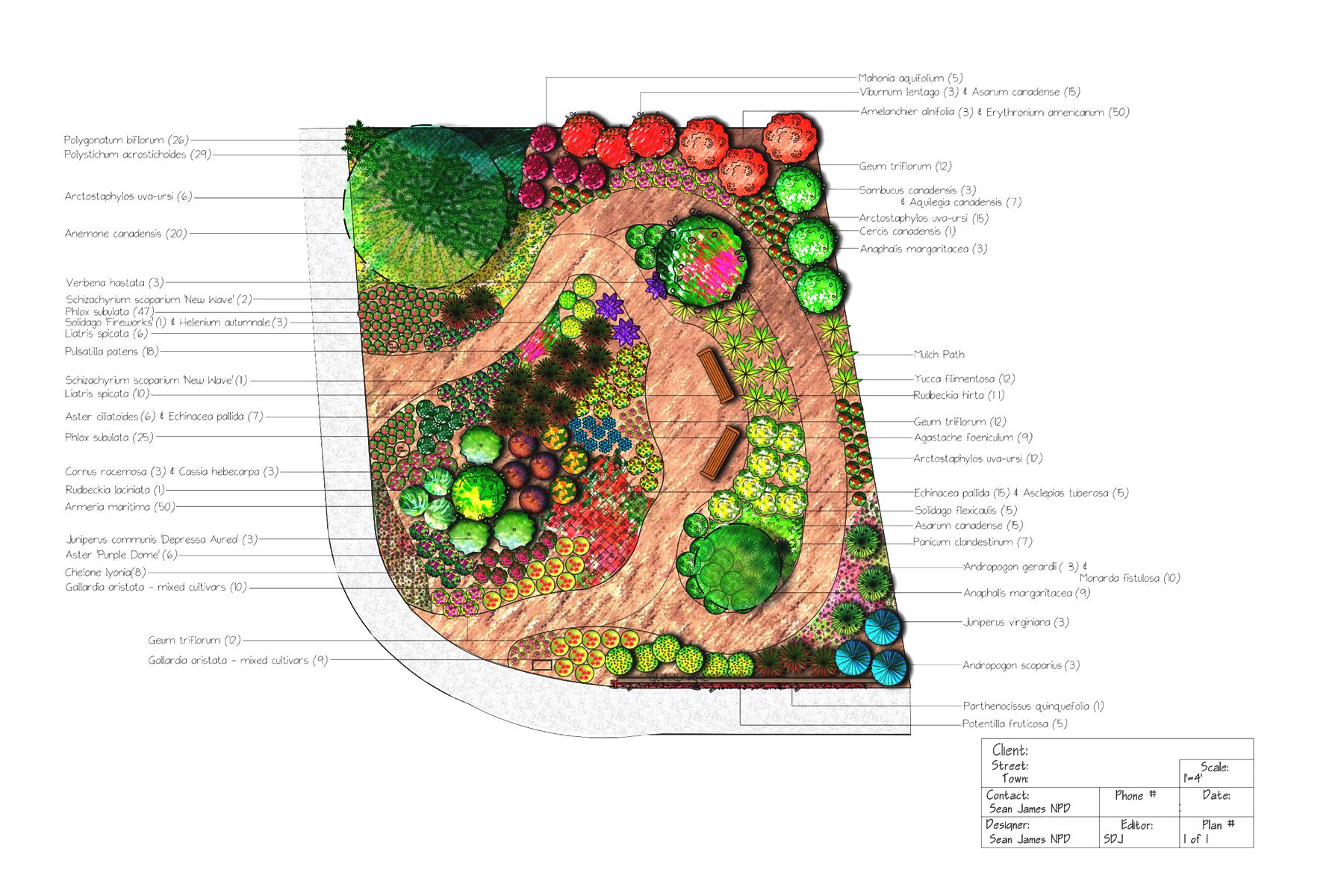Garden Design
A passion for learning ensures landscapes from Sean James Consulting & Design are always using the latest philosophies and methods, while maintaining a commitment to understanding – and responding to – the visions and goals of customers. Being a pioneer in the eco-landscaping field, many of Sean’s designs focus on problem solving, such as a the use of rain gardens and other LID techniques to handle flooding and ponding. Other concepts to be considered include FusionTM Gardening, creating pollinator habitat, edible landscaping or challenging situations such as deep shade, clay or sand soil. Problem solving should never need to sacrifice beauty. With a comprehensive knowledge of plants and where they grow, and applying the principals of landscape artistry, including texture and colour, each design can be as beautiful as the last. Old wisdom was to amend soil to plant what you wanted. Your design will focus on the amazing lists of plants that tolerate certain soil conditions. There’s a giant list of plants that LOVE clay and another for sand, salt, rain gardens, dry shade and so on. You’ll have less disease, less expense and less work!
Carefully considered are details such as traffic flow, use (e.g. do you do a lot of entertaining, or very little) and choosing hard surfaces that complement the home, are also considered, focusing on locally-sourced materials whenever possible. Take some time to think about what you like, perhaps collecting some photos. Ponder favorite colours and plants that you might like incorporated. If you have a detailed lot plan, that will help keep costs within expectations.
Since practically everyone’s first desire is for low-maintenance landscaping, working with nature is the first, best step.
Looking at the sample design below, you’ll see only botanical names are used, but have no fear: every design comes with a digital appendix that lists both common names and botanical names and provides a brief description of the proposed plants as well as digital links to even more information and photos. With a focus on natives, (although not exclusively), the plant list will also show you what plants in your garden are native to Canada. Things are done this way to ensure you get exactly what you want and also to avoid the confusion that can come with common names for plants. Typically, designs have a wide variety of plants to promote biodiversity and avoid any one disease or insect killing off a large portion of the garden. (Think of the problems with Emerald Ash Borer and Septoria Leaf Spot on Rudbeckia)

